This article needs additional citations for verification .(September 2014) |

Stonesetting is the art of securely setting or attaching gemstones into jewelry.
This article needs additional citations for verification .(September 2014) |

Stonesetting is the art of securely setting or attaching gemstones into jewelry.

There are two general types of gemstone cutting: cabochon and facet. Cabochons are smooth, often domed, with flat backs. [1] Agates and turquoise are usually cut this way, but precious stones such as rubies, emeralds and sapphires may also be. [2] [3] [4] Many stones like star sapphires and moonstones must be cut this way in order to properly display their unusual appearance. [1] [4]
A faceted shape resembles that of the modern diamond. It has a flat, polished surface, typically with a transparent surface that refracts light inside the gemstone and reflects light on the outside. [5] In the case of a cabochon stone, the side of the stone is usually cut at a shallow angle, so that when the bezel is pushed over the stone, the angle permits it to hold the stone tightly in place. In the case of faceted stones, a shallow groove is cut into the side of the bezel into which the girdle of the stone is placed, with metal prongs then pushed over the face of the stone, holding it in place; cabochons may also be set into prong settings. In both cases, the pressure and the angle of the prongs holds the stone in place.
Just as the angle of the sides of a cabochon creates the pressure to hold the stone in place, so there is an overlying principle in setting faceted stones. If one looks at a side view of a round diamond, for example, one will see that there is an outer edge, called the girdle, and the top angles up from there, and the bottom angles down from there. Faceted stones are set by "pinching" that angle with metal. All of the styles of faceted stone setting use this concept in one way or another.
There are thousands of variations of setting styles, but there are several fundamental types:

The earliest known technique of attaching stones to jewelry was bezel setting. A bezel is a strip of metal bent into the shape and size of the stone and then soldered to the piece of jewelry. The stone is then inserted into the bezel, and the metal edge of the bezel pressed over the edge of the stone, holding it in place. This method works well for either cabochons or faceted stones. [6]

A prong setting is the simplest and most common type of setting, largely because it uses the least amount of metal to hold the stone in place, displaying most of the stone and forming a secure setting. Generally, a prong setting is formed of a number of short, thin strips of metal, called prongs, which are arranged in a shape and size to hold the given stone, and are fixed at the base. Then a burr of the proper size is used to cut what is known as a "bearing", which is a notch that corresponds to the angles of the stone. The burr most often used is called a "hart bur", and is angled and sized for the job of setting diamonds. The bearing is cut equally into all of the prongs and at the same height above the base. The stone is then inserted, and pliers or a pusher are used to bend the prongs gently over the crown of the stone, with the tops of the prongs are clipped off with snips, filed to an even height above the stone, and finished. Usually a "cup burr" is used to give the prong a nice round tip. A cup burr is in the shape of a hemisphere with teeth on the inside, for making rounded tips on wires and prongs.
There are many variations of prong settings including just two prongs, the more common four prong setting or up to 24 or more, with many variations involving decoration, size and shapes of the prongs themselves, and how they are fixed or used in jewelry. The method of setting is generally the same for all, no matter how many prongs are present.

A channel setting is a method whereby stones are suspended between two bars or strips of metal, called channels. Typically, a line of small stones set between two bars is called a channel setting, and a design where the bars cross the stones is called a bar set. The channel is a variation of a "U" shape, with two sides and a bottom. The sides are made slightly narrower than the width of the stone or stones to be set, and then, using the same burs as in prong setting, a small notch, called a bearing, is cut into each wall. The stone is put in place in those notches, and the metal on top is pushed down, tightening the stone in place. The proper way to set a channel is to cut a notch for each stone, but for cheaper production work sometimes a groove is cut along each channel. Since the metal can be very stiff and strong, a reciprocating hammer, similar to a jackhammer but jewelry sized, may be used to hammer down the metal, as it can be difficult to do by hand. The metal is then filed down and finished, and the inner edge near the stones cleaned up and straightened as necessary. As with all jewelry, there can be many variations of channel work. At times the walls will be raised—sometimes a center stone will be set between two bars that rise high from the base ring—or the channel may be cut directly into the surface, making the stones flush with the metal.


"Bead setting" is a generic term for setting a stone directly into metal using gravers, also called burins, which are essentially tiny chisels. A hole is drilled directly into the surface of the metal, before a ball burr is used to make a concave depression the size of the stone. Some setters will set the stone into the concave depression, and some will use a hart burr to cut a bearing around the edge. The stone is then inserted into the space, and gravers or burins are used to lift and push a tiny bit of the metal into and over the edge of the stone. Then a beading tool – a simple steel shaft with a concave dimple cut into the tip – is pushed onto the bit of metal, rounding and smoothing it, pushing it firmly onto the stone, and creating a "bead".
There are many types of setting that use the bead setting technique. When many stones are set closely together in this fashion, roughly 1 millimetre (0.039 in) apart, [7] covering a surface, this is known as a "pavé" setting, from the French for "paved" or "cobblestoned". When a long line is engraved into the metal going up to each of the beads, this is known as a "star setting". The other common usage of this setting is known as "bead and bright", "grain setting" or "threading" in Europe, alongside many other names. This is when, after the stone is set as described above, the background metal around the stone is cut away, usually in geometric shapes, resulting in the stone being left with four beads in a lowered box shape with an edge around it. Often it is a row of stones, so it will be in a long shape with a raised edge and a row of stones and beads down the center. This type of setting is still used often, but it was very common in the early- to mid-20th century.

Burnish setting, also sometimes referred to as flush setting, shot setting, or gypsy setting, is similar to bead setting, but after the stone is inserted into the space, instead of using a graver to lift beads, a burnishing tool is used to push the metal around the stone. The stone will be roughly flush with the surface, with a burnished or rubbed edge around it. This type of setting has a long history, and has seen a resurgence in contemporary jewelry. Sometimes the metal is finished using sandblasting.

Agate is the banded variety of chalcedony, which comes in a wide variety of colors. Agates are primarily formed within volcanic and metamorphic rocks. The ornamental use of agate was common in Ancient Greece, in assorted jewelry and in the seal stones of Greek warriors, while bead necklaces with pierced and polished agate date back to the 3rd millennium BCE in the Indus Valley civilisation.

A bead is a small, decorative object that is formed in a variety of shapes and sizes of a material such as stone, bone, shell, glass, plastic, wood, or pearl and with a small hole for threading or stringing. Beads range in size from under 1 millimetre (0.039 in) to over 1 centimetre (0.39 in) in diameter.

A gemstone is a piece of mineral crystal which, when cut or polished, is used to make jewelry or other adornments. However, certain rocks and occasionally organic materials that are not minerals are also used for jewelry and are therefore often considered to be gemstones as well. Most gemstones are hard, but some soft minerals are used in jewelry because of their luster or other physical properties that have aesthetic value. Rarity and notoriety are other characteristics that lend value to gemstones.

Jewellery consists of decorative items worn for personal adornment, such as brooches, rings, necklaces, earrings, pendants, bracelets, and cufflinks. Jewellery may be attached to the body or the clothes. From a western perspective, the term is restricted to durable ornaments, excluding flowers for example. For many centuries metal such as gold often combined with gemstones, has been the normal material for jewellery, but other materials such as glass, shells and other plant materials may be used.
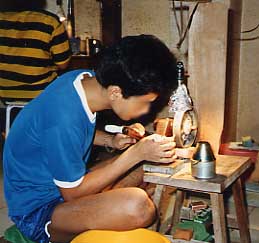
Lapidary is the practice of shaping stone, minerals, or gemstones into decorative items such as cabochons, engraved gems, and faceted designs. A person who practices lapidary is known as a lapidarist. A lapidarist uses the lapidary techniques of cutting, grinding, and polishing. Hardstone carving requires specialized carving techniques.
Diamond cutting is the practice of shaping a diamond from a rough stone into a faceted gem. Cutting diamonds requires specialized knowledge, tools, equipment, and techniques because of its extreme difficulty.
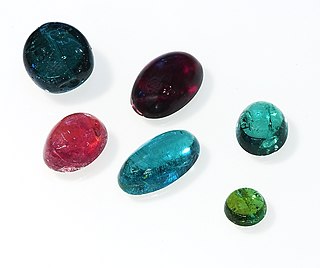
A cabochon is a gemstone that has been shaped and polished, as opposed to faceted. The resulting form is usually a convex (rounded) obverse with a flat reverse. Cabochon was the default method of preparing gemstones before gemstone cutting developed.
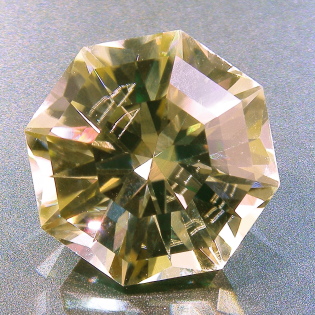
Facets are flat faces on geometric shapes. The organization of naturally occurring facets was key to early developments in crystallography, since they reflect the underlying symmetry of the crystal structure. Gemstones commonly have facets cut into them in order to improve their appearance by allowing them to reflect light.

Seed beads or rocailles are uniformly shaped, spheroidal beads ranging in size from under a millimeter to several millimeters. Seed bead is also a generic term for any small bead. Usually rounded in shape, seed beads are most commonly used for loom and off-loom bead weaving. They may be used for simple stringing, or as spacers between other beads in jewelry.

A card scraper or cabinet scraper is a woodworking shaping and finishing tool. It is used to manually remove small amounts of material and excels in tricky grain areas where hand planes would cause tear out. Card scrapers are most suitable for working with hardwoods, and can be used instead of sandpaper. Scraping produces a cleaner surface than sanding; it does not clog the pores of the wood with dust, and does not leave a fuzz of torn fibers.

A diamond cut is a style or design guide used when shaping a diamond for polishing such as the brilliant cut. Cut refers to shape, and also the symmetry, proportioning and polish of a diamond. The cut of a diamond greatly affects a diamond's brilliance—a poorly-cut diamond is less luminous.
In the context of machining, a cutting tool or cutter is typically a hardened metal tool that is used to cut, shape, and remove material from a workpiece by means of machining tools as well as abrasive tools by way of shear deformation. The majority of these tools are designed exclusively for metals.

A tension ring is a type of finger ring that holds a gemstone in place by pressure rather than prongs, a bezel or other mounting. The metal setting is actually spring-loaded to exert pressure onto the gemstone, and tiny etchings or grooves in the metal create a shelf that supports the gemstone's edges. The gemstone appears to be suspended in the air with nothing holding it in place.
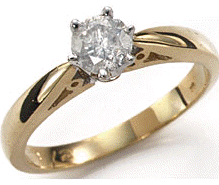
Prong setting or prong mount refers to the use of metal projections or tines, called "prongs", to secure a gemstone to a piece of jewelry. A prong setting is one component of what is known to jewelers as a head, a claw-shaped type of binding that is welded or soldered to a jewelry item to mount a gemstone to the jewelry item. A common setting for diamond engagement rings, the prong setting allows light to strike a gemstone from more angles, increasing its brilliance.
A faceting machine is broadly defined as any device that allows the user to place and polish facets onto a mineral specimen. Machines can range in sophistication from primitive jamb-peg machines to highly refined, and highly expensive, commercially available machines. A major division among machines is found between those that facet diamonds and those that do not. Specialized equipment is required for diamond faceting, and faceting as an occupation rarely bridges the gap between diamond and non-diamond workmanship. A second division can be made between industrial faceting and custom/hobby faceting. The vast majority of jewelry-store gemstones are faceted either abroad in factories or entirely by machines. Custom jewelry is still commonly made of custom metalwork and mass-produced gemstones, but unusual cuts or particularly valuable gemstone material will likely be faceted on a personal faceting machine.
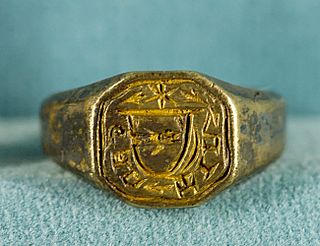
A bezel is a wider and usually thicker section of the hoop of a ring, which may contain a gem or a flat surface. Rings are normally worn to display bezels on the upper or outer side of the finger. In gem-cutting the term bezel is used for those sloping facets of a cut stone that surround the flat table face, which is the large, horizontal facet on the top.
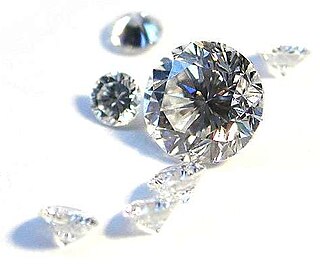
Diamond is one of the best-known and most sought-after gemstones. They have been used as decorative items since ancient times.

Burnishing is the plastic deformation of a surface due to sliding contact with another object. It smooths the surface and makes it shinier. Burnishing may occur on any sliding surface if the contact stress locally exceeds the yield strength of the material. The phenomenon can occur both unintentionally as a failure mode, and intentionally as part of a metalworking or manufacturing process. It is a squeezing operation under cold working.

Native American jewelry refers to items of personal adornment, whether for personal use, sale or as art; examples of which include necklaces, earrings, bracelets, rings and pins, as well as ketohs, wampum, and labrets, made by one of the Indigenous peoples of the United States. Native American jewelry normally reflects the cultural diversity and history of its makers, but tribal groups have often borrowed and copied designs and methods from other, neighboring tribes or nations with which they had trade, and this practice continues today. Native American tribes continue to develop distinct aesthetics rooted in their personal artistic visions and cultural traditions. Artists may create jewelry for adornment, ceremonies, and display, or for sale or trade. Lois Sherr Dubin writes, "[i]n the absence of written languages, adornment became an important element of Indian communication, conveying many levels of information." Later, jewelry and personal adornment "...signaled resistance to assimilation. It remains a major statement of tribal and individual identity."
Dopping cement, dopping wax, or faceting wax is a thermal adhesive used by gem cutters to secure ("dop") a gemstone to a wooden or metal holder for grinding and lapping. Setters cement is a similar material used to secure a gemstone while setting or polishing.